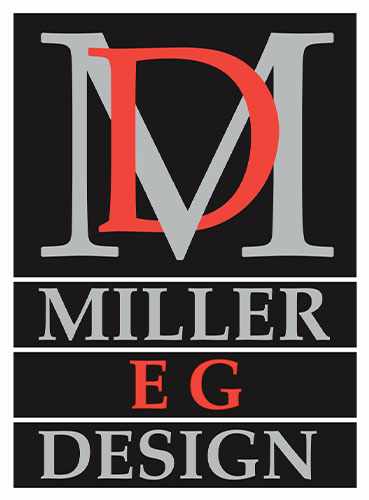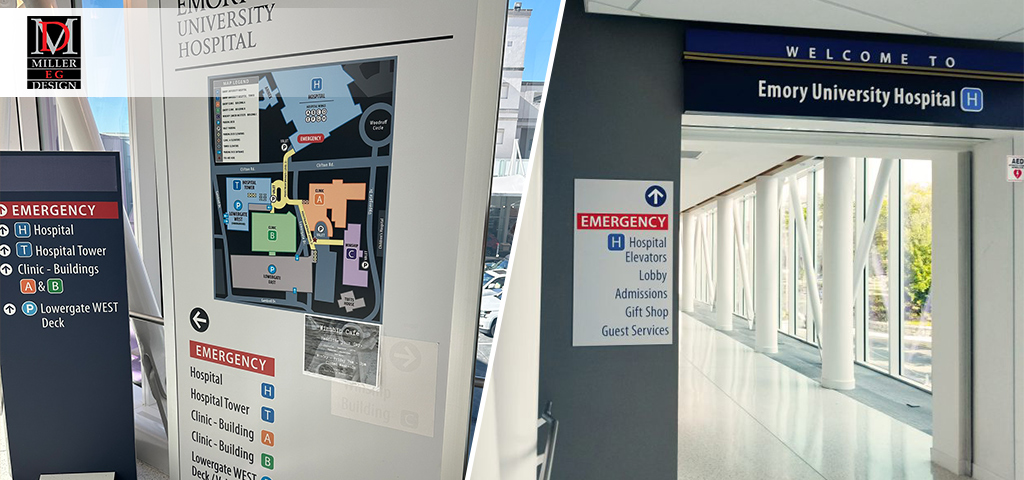Navigating a healthcare facility can be a stressful experience for any patient, but for individuals receiving treatment in behavioral health environments, clear and thoughtful wayfinding is essential. Wayfinding encompasses the design strategies that help individuals easily navigate spaces, promoting comfort, independence, and safety. At Miller EG Design, we specialize in creating effective wayfinding systems tailored to behavioral health facilities, ensuring an environment that prioritizes both patient well-being and operational efficiency.
The Importance of Wayfinding in Behavioral Health Facilities
Behavioral health facilities cater to individuals facing mental health challenges, cognitive impairments, or emotional distress. For these patients, confusing signage or poorly planned layouts can contribute to heightened anxiety and frustration. A well-executed wayfinding system minimizes these stressors by offering clear, easy-to-understand navigation solutions.
Effective wayfinding enhances patient experience by:
- Reducing Anxiety: Patients and visitors can navigate the facility with confidence, reducing stress and fostering a sense of security.
- Promoting Independence: Intuitive signage empowers patients to move through the space without constantly seeking staff assistance.
- Improving Safety: Clearly marked exits, designated areas, and emergency routes contribute to a safer environment for both patients and staff.
- Enhancing Staff Efficiency: When patients can easily find their way, staff members can focus on providing care rather than offering directions.
Key Components of an Effective Wayfinding System
A successful wayfinding system in behavioral health facilities requires thoughtful planning, strategic placement, and a deep understanding of patient needs. At Miller EG Design, we incorporate the following elements to create seamless navigation solutions:
1. Clear and Concise Signage
Simple, easy-to-read signage with universal symbols ensures accessibility for all patients, including those with cognitive challenges. Using high-contrast colors and legible fonts enhances visibility and comprehension.
2. Consistent Design Language
Maintaining uniformity in fonts, colors, and directional cues throughout the facility prevents confusion and creates a cohesive visual experience.
3. Color-Coded Zones
Assigning specific colors to different wings or departments within the facility allows for quick recognition and orientation. This is particularly beneficial for patients with memory-related conditions.
4. Strategic Placement of Signage
Wayfinding signs should be positioned at key decision points, such as entrances, intersections, and elevator lobbies. Placing signs at eye level ensures optimal visibility.
5. Integration of Technology
Digital signage, interactive maps, and mobile-friendly navigation tools can enhance traditional wayfinding methods, offering patients and visitors a modern, user-friendly experience.
6. Use of Landmarks
Distinctive architectural features, artwork, or natural elements serve as visual anchors, helping patients orient themselves within the facility.
The Impact on Patient Well-Being
Beyond practical navigation, wayfinding plays a critical role in shaping the overall patient experience. Thoughtfully designed spaces promote calmness and reassurance, reinforcing the healing process. Behavioral health patients, in particular, benefit from environments that minimize disorientation and provide clear guidance on movement within the facility.
For example, a patient experiencing heightened anxiety may struggle with decision-making. If signage is unclear, their stress levels can escalate. However, a well-designed wayfinding system ensures that even in moments of distress, they can find their way quickly and easily.
Enhancing Staff Workflow and Facility Operations
A well-planned wayfinding system not only benefits patients but also improves the overall efficiency of a behavioral health facility. When navigation is intuitive, staff members spend less time guiding patients and more time providing care. Additionally, clearly marked routes facilitate smoother emergency evacuations and streamline internal operations.
Miller EG Design: Your Partner in Wayfinding Solutions
At Miller EG Design, we understand the unique challenges associated with behavioral health facilities. Our expertise in environmental graphic design allows us to create wayfinding solutions that prioritize patient well-being, safety, and operational efficiency.
By collaborating with healthcare administrators, architects, and facility managers, we develop customized strategies that enhance the patient experience while maintaining compliance with industry standards. Our team takes a holistic approach to wayfinding, incorporating evidence-based design principles that promote healing and reduce stress.
If you’re looking to improve the wayfinding experience in your behavioral health facility, Miller EG Design is here to help. Contact us today at (404) 788-0150 or visit our location at 315 Northpoint Pkwy SE Suite F, Acworth, GA 30102, to discuss how we can create a seamless, patient-focused navigation system tailored to your needs.

